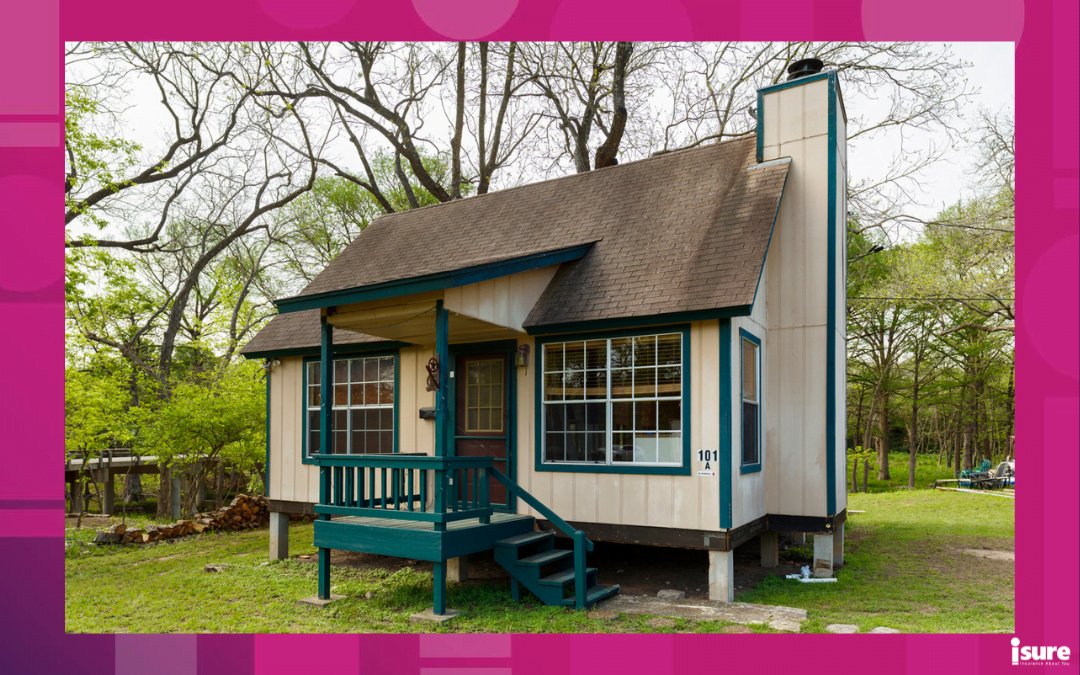What is considered a ‘tiny home’?
While there are differing opinions as to what constitutes a tiny home, most people can agree that it’s a home that is smaller than about 450 square feet. A tiny home does not necessarily have to be on wheels. It can be on a foundation and can even have a basement. Campers, recreational vehicles, cottages and other structures used on a seasonal basis are not considered tiny homes.
Tiny homes that are legal in Ontario must have:
- Square footage of over 188 sq.ft. (or 17.47 sq. m.)
- A living/sleeping area, a bathroom with a shower or bath, a cooking area with running water.
- Be built to the Ontario Building Code. This means no sleeping lofts lower than 6’10”, no ladders to access the second level (staircase only), fire safety, insulation, etc.
- A building permit from your municipality. They will review the plans for the house to make sure they do follow the Ontario Building Code and also check that the house satisfies municipal by-laws.
Currently, there are no minimum footprints in most Ontario municipalities to build a tiny house on a lot. Many municipalities that do have a minimum footprint are likely in the process of revising this. Additionally, the Ontario government is encouraging people to build secondary dwelling units on their properties to increase housing supply and density. That means you can even get a permit to build a tiny home in Ontario on a property with another house on it.
The four types of tiny homes
1. Tiny home on foundation as a primary dwelling
A tiny home on a foundation can be a legal primary dwelling if there are no minimum size requirements, or a typical tiny home satisfies these requirements. Tiny homes on a foundation must also satisfy local building codes and a building permit is a requirement.
2. A tiny home on a foundation as a secondary dwelling
A tiny home as a secondary dwelling is legal in municipalities that allow detached secondary dwellings on lots that already have a primary house. These are sometimes called Additional Dwelling Units (ADUs), Secondary Dwelling Units, laneway houses, coach houses, and garden suites.
If you are planning to renovate an existing, separate structure on your property, such as a garage, coach house or laneway house, you should contact your local planning and building departments for more information on how to proceed.
3. Tiny homes on wheels
Tiny homes on wheels are popular for their mobility and ease of transportation. While tiny homes can be built on foundations, most are built on trailers. This style of tiny house is often referred to as a THOW (Tiny House On Wheels).
4. Land leasing
Land leasing is a quicker and more affordable route to tiny home ownership for many people. These locations allow land to be leased or rented for a tiny home. This means it will belong to its owner and the land belongs to a landlord or community. Locations with terms, like a prepaid 99-year lease, are considered land purchase for the purposes of this directory.
Places that you can put a tiny home in Ontario
- On an empty lot that you own. This is as long as the tiny home follows all building code requirements.
- Your backyard. Even in your backyard, you need a permit, as well as follow the building codes and by-laws.
- Tiny house community. There are several throughout Ontario.
- Your new home construction site. You’re allowed to live in a tiny home for up to two years on-site while your main house is being built.
- Cabin land. In some municipalities, extra living spaces are allowed on the same land.
Despite their size, tiny homes must still comply with the health and safety requirements of Ontario’s Building Code, municipal zoning and other local by-laws. They must also have necessary servicing, such as water and sewage.
Rental opportunity: Adding a tiny home to your property
Many may see adding a tiny home to their property as a secondary dwelling as a smart investment. The potential to add a rental property is appealing. However, before you decide to do so, it is important that you first speak with your local municipal planning and building departments. They can tell you whether you can add one to your property and answer questions related to the Building Code, zoning and other by-laws.
Some of the important things you should talk to your municipality about as you consider building a tiny home include:
- Municipal zoning requirements that apply to your property
- Designing your tiny home to comply with the Building Code
- Getting necessary building permits
- Required building inspections during construction
- Parking requirements
- Size requirements, if any
- Rules about connecting to municipal services, if available
To help you through the sometimes-complex approval and building process, we recommend you hire at least one of the following:
- Building Code designer registered with the Ontario government
- Professional planner
- Architect
- Engineer
Retaining one of these professionals with your builder can help you get all the necessary approvals, building permits and arrange for construction inspections.
Why are tiny homes in Ontario so hot right now?
Since before the COVID-19 pandemic, Ontario has seen the cost of living steadily climb out of reach for many potential homebuyers. Big cities, like Toronto and Ottawa, have become unaffordable for many. Additionally, small towns in Ontario are seeing an influx of big-city residents. This is effectively the cause of “pricing out” the small town and rural population from these homes. “Tiny homes are a great option for people who want to downsize and simplify their lives,” says Richard Fung, a home builder in Ontario, Canada. The trend towards small homes is being driven by a desire for simpler, more sustainable lifestyles. “People are realizing that they don’t need a lot of stuff to be happy,” he says. Tiny homes can also be custom-built to suit any budget and taste, which is appealing for people looking to explore the option of downsizing.
Quick facts about tiny homes in Ontario
- Tiny homes are legal in Canada
- Tiny houses cost $80- $200,000
- Friendly cities include Toronto, Quebec, Montreal and Vancouver
- They can either be built on site or built in a factory and transported to the site
If you are interested in seeing what types of tiny homes are currently for sale, please click here.
FAQs about tiny homes in Ontario
What are the rules for tiny homes in Ontario?
As long as the tiny home follows all building codes, you can live in it year-round. The tiny home must be a minimum of 188 square feet and follow all by-laws. If it is going to be in an urban or suburban area, it must have connections to municipal services, such as electricity and water.
What are the limitations of owning tiny homes in Ontario?
Along with less storage space, you’ll also have less living space. While tiny houses are spacious enough for one or two people, it might be a bit uncomfortable for an entire family. There’s also a lot less privacy. You’ll be limiting the number of guests you can have over unless you have additional outdoor space for entertaining.
Can I live in a trailer on my property?
No. An RV is not a residential building under the Ontario Building Code. Dwellings are defined as buildings “capable of being occupied as a home, residence or accommodation” and does not include hotels, motels, rooming houses, mobile homes, or RVs of any kind.
What happens if you build a tiny homes in Ontario without a permit?
An individual who is charged and found guilty of an offence under the Building Code Act, 1992 , such as building without a permit, can be fined up to $50,000 for a first offence and up to $100,000 for subsequent offences. Click here to view Ontario Building Code information specific for tiny home construction.
Can I rent out my tiny home in Ontario?
Yes, owners of tiny homes are free to rent out their properties, just as you would if you own a traditional home. Should you decide to use your tiny home as a rental property, you will need customized insurance coverage designed to protect your short-term rental. Alternatively, if you intend to rent your tiny home out long-term, you will need a tenant and lease agreement in place. Before listing your tiny home for rent, speak with one of our isure brokers to discuss insurance coverage.
Living in a tiny home can bring you many positives. You will spend less time cleaning and doing house stuff and more time living. Tiny homes are typically affordable to build and often don’t cost enough to qualify for a mortgage. Inexpensive and eco-friendly, the tiny home movement is gaining speed. Remember, it you are thinking about building a tiny home on your property or planning to move to a tiny home community, be sure to check in with your insurer or isure representative. We can help you tailor your insurance to make sure that you still have adequate coverage, no matter the size or location of your home.




